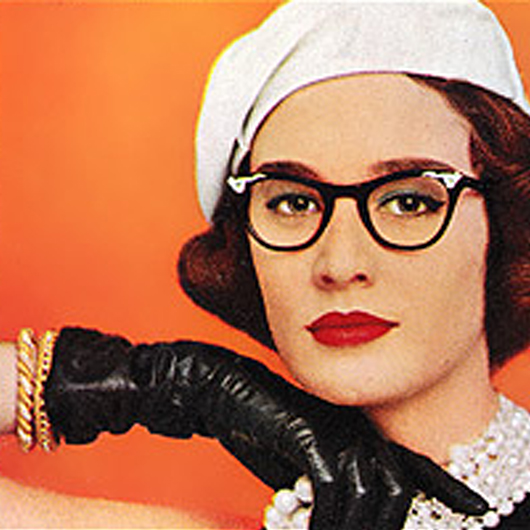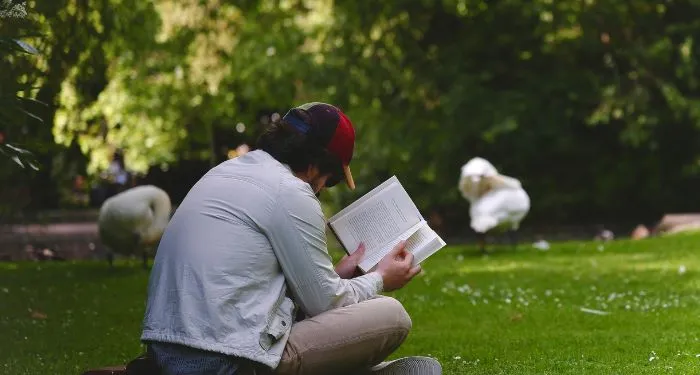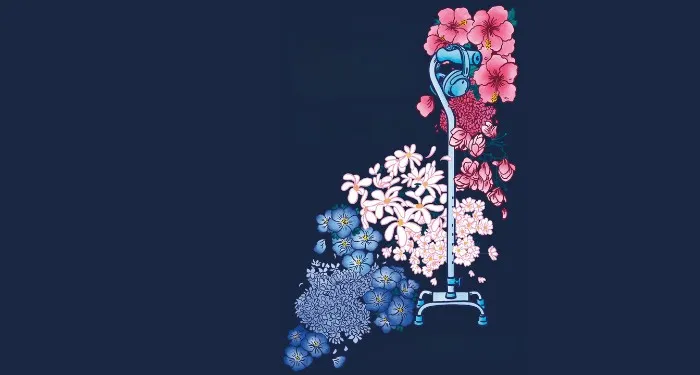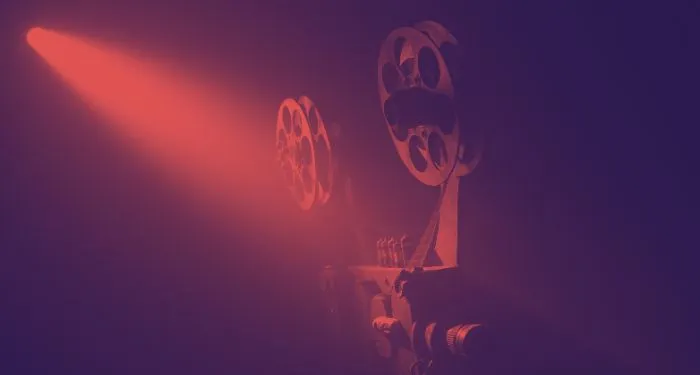Kira Muratova, perhaps the greatest Ukrainian film director of the latter part of the twentieth century, was born in 1934 in Soroca. At the time her birthplace was in Romania; now it is in Moldova, on the Ukrainian border. The daughter of a Romanian Russian father and a Romanian Jewish mother, she bore the deep biographical scars common to Soviet filmmakers of her generation. Both of her parents were members of the Communist Party and worked for the Comintern; her father took part in the antifascist resistance in occupied Romania and was captured and shot by the country’s military in 1941. Kira and her mother, a doctor turned politician, survived, having been evacuated east.
At twenty-five Muratova graduated from Moscow’s Gerasimov Institute of Cinematography, incubator of most of Soviet film’s greatest talents. She took a job at the Odesa Film Studio, where she worked for the majority of her career. Her oeuvre is singular and fearless, but she remains largely unknown in the English-speaking world. Two of her major films, Brief Encounters (1967) and The Long Farewell (1971), are available in Criterion editions and on the indispensable streaming service Klassiki, which also offers her feature Getting to Know the Big, Wide World (1978); the rest of her work is largely inaccessible to English speakers. “Scenographies of Chaos,” a retrospective that opened yesterday at Film at Lincoln Center, is a welcome corrective, an extraordinary opportunity to see almost all her films, including some that were nearly lost to posterity.
After decades of Stalinist musicals and patriotic schlock, Soviet cinema was reborn during Khrushchev’s Thaw, which began in 1956. Directors like Mikhail Kalatozov, Larisa Shepitko, Marlen Khutsiev, Andrei Tarkovsky, and Sergei Parajanov, with the help of cinematographers like Sergei Urusevsky, invented new cinematic languages and explored questions of gender, identity, and historical trauma that had been suppressed under high Stalinism. Their poetic, impressionistic films revived the Soviet film industry that had reconfigured world cinema with the revolutionary experiments of Sergei Eisenstein, Dziga Vertov, and Oleksandr Dovzhenko.
Muratova began her career during the last days of this efflorescence, as it was being stifled by the renewed censorship of the Brezhnev years. Her early work is distinguished by a subtle experimentalism. Nonlinear storytelling makes basic plot elements highly ambiguous, and something is always off-kilter—narratively, visually, emotionally. From the beginning of her career she offered probing, often painful investigations into edge states: life on the borders of political, economic, and social systems, of gendered expectations, of madness, of old age and death. Her characters are always tipping toward both laughter and violence, their relationships nourished on hostility. Her men are often rebarbative, her women tightly wound or grotesquely coquettish.
In the early 1970s censorship caused a long pause in Muratova’s career, during which she was reportedly reduced to working as a janitor at the Odesa Film Studio. The near-elimination of censorship during perestroika allowed her to start working again, this time on her own terms—though her 1989 film The Asthenic Syndrome, which featured extensive full-frontal male nudity, won the honor of being the only film officially censored during this freewheeling period. Her style grew uncompromisingly avant-garde, with metanarrative devices, ritualized repetition of dialogue, and an intentionally artificial approach to acting.
In the first, black-and-white section of The Asthenic Syndrome, a recently widowed doctor expresses her grief by assaulting strangers and having anonymous sex. When this film-within-a-film ends, we see the star actress in color on a movie theater stage, wearing a jaunty boater and ready to speak about her work. But the audience jostles out, grumbling about the depressing film, before the actress can say a word. Isn’t reality sad enough? The last man who remains in the theater is asleep: this, we come to understand, is his response to the clamoring violence of the last days of the USSR. The Asthenic Syndrome is like so much of Muratova’s work: harrowing, enigmatic, and strangely joyful in its artistic courage.
*
Like many Soviet filmmakers, Muratova paid close attention to professions rarely featured in American or European cinema. Her characters build factories and apartment complexes, worry about how to irrigate fields, and form love triangles on construction sites. In her first full-length feature as a solo director, Brief Encounters, Muratova also stars as Valentina, a high-ranking city administrator. In her story, the world-building Soviet project crashes into the domestic dilemmas confronted by Soviet women, who are torn between several kinds of selfhood. Can Valentina balance marriage and work? Can she ensure that newly built apartments have running water that works even on the fifth floor?
The plot unfolds through ambiguous flashbacks that might also be dreams or fantasies. It revolves around the appearance of Nadia, a young girl from the countryside who comes to work as household help for Valentina. A stormy but never openly articulated conflict follows: Nadia has fallen in love with Valentina’s absentee geologist husband, played by the heartthrob guitar poet Vladimir Vysotsky, a superstar of the era. (Geology was considered one of the USSR’s sexiest professions: cowboy meets gold miner.) Valentina’s husband hates her job and wants her to quit so she can pay him more attention. His favorite activities are playing the guitar and boiling crayfish alive. When Muratova made Brief Encounters she had recently divorced her first husband, Oleksandr Muratov, with whom she had codirected her first two films.
Soviet censors limited the release of the film, perhaps displeased by its apparent solipsism. Brief Encounters begins with Valentina’s humorous revision of Hamlet’s “to be or not to be” soliloquy (in Russian, “byt ili ne byt”) as she debates whether to wash the dishes (“myt ili ne myt”). She is brought up short by harsh self-judgment: “Why do you complain?” she asks herself. Like many women both inside and outside the USSR, she chafes at the apparent irreconcilability of domestic life and professional identity—and then blames herself for the frustration and pain this conflict causes.
She is used to being the only woman in the room. Her male peers treat her as an outsider, but she has also adopted some of their mannerisms: she touches the young women under her professional supervision in a casual, proprietary, slightly erotic way, stroking one woman’s stockinged calf while she stands on a ladder. She initiates her junior female colleagues into a new realm of professional and intellectual possibilities, a world of meaningful work, good books, and good music, and a life that promises more than the culmination of a marriage plot. But these hopeful girls are still confined by the expectations of a society that, for all its early aspirations to revolutionary feminism, remains highly sexist. Women with less hope of upward mobility resent Valentina: for all her pretensions, her hairdresser sniffs, she’s not much to look at.
Muratova’s work is sometimes described as anthropological, and Brief Encounters gives us a case study in internalized sexism. At one point Valentina tells a female underling that she’s glad all her colleagues are men: women are so much more trouble. In her performance Muratova captures the dilemmas of many generations of professional women across many cultures. She speaks in entirely different voices when she flirts or quarrels with her husband (who is always off searching for silver, gold, and younger, simpler women), when she speaks condescendingly to Nadia, and when she practices a speech for a scientific conference. (“Dear comrades…”) Even when she talks to herself, she sounds strangely mannered.
Throughout her career Muratova was preoccupied with showing how the material world and its surfaces define character and fate. The new apartments Valentina oversees are flimsy and cheap. (This reflects historical reality: Khrushchev ordered the construction of large numbers of housing complexes with walls so thin residents could hear their neighbors coughing.) And yet they are better than the squalid single rooms into which whole families crowd. When the apartments still don’t have running water, workers already clamor to move in: one of Valentina’s unpleasant professional duties is to explain why they need to wait. Perhaps this is a metaphor: marriage is a lousy place, but it’s better than sharing a room with your parents and siblings.
*
While Brief Encounters was given a limited release, Muratova’s next film, The Long Farewell, was simply banned. It centers on a high-strung divorced mother, Evgenia, and her brooding, artistic sixteen-year-old son, Sasha, who longs to leave their home in Odesa and live with his father in Siberia. Here again Muratova pays close attention to the casual misogyny of both men and women, and to a middle-aged professional woman’s strained attempts to conform to degrading standards of femininity. (The original screenplay focused on Sasha’s adolescent struggles; Muratova transformed Evgenia from stock mother to protagonist.) A talented archer and competent translator, Evgenia loses her temper when her boss passes her over for a plum interpreting assignment, giving it instead to his male crony. But she also simpers, giggles, primps, and makes textbook hysterical scenes to get her way.
The theatrical actress Zinaida Sharko’s performance as Evgenia comes to an excruciating climax at the end of the film, when Evgenia and Sasha find their seats taken at a variety show. Sasha and other audience members beg Evgenia to take another seat rather than interrupting the performance, but she refuses, sniffling but defiant, and has to be dragged out by force. Muratova extends this minor calvary by having the actors replay the scene three times, so that it feels like a traumatic memory. During the repeated scene, a young woman sings a poem by Mikhail Lermontov, a Romantic icon of rebellion, about sailing away alone. Тhe poem’s male rebel desires a storm, imagining that he can find a paradoxical peace there. Male storms are the stuff of poetry; female storms, especially those of women over forty, are seen as mere embarrassments. The scene is as hard to watch as a murder.
In the films Muratova made from the 1980s onward, after her long involuntary hiatus, the subterranean horror of her earlier work rose to the surface. No longer repressed, her women became artists and killers; free of censorship, Muratova became a mannerist. Many of her films from this later period feature numerous murders and other forms of extreme cruelty, yet the violence always has a farcical, surreal aspect thanks to Muratova’s intentionally artificial style. Men, women, and children knock each other off like characters in a slapstick comedy. One of Muratova’s favorite directors was Charlie Chaplin, from whom she learned much about the choreography of public violence.
By now Muratova had fully rejected conventional approaches to plot, psychology, and actorly performance. In the mid-1990s she started collaborating with the impossibly glamorous Russian Tatar actress Renata Litvinova, a Garbo-Dietrich throwback who now, in her late fifties, walks for Balenciaga. (Check out her Instagram.) Litvinova projects spectacular, world-consuming narcissism rather than trying to inhabit a specific imagined role. What matters is not what motivates her characters but rather her astonishing, complacent grace as, for instance, she pulls on a stocking after using it to strangle a stranger. The scholar Mikhail Iampolski, the author of a 2008 Russian-language book on Muratova, reports that she once told him, “I found an extraordinary animal—this animal is called Renata Litvinova.”
Muratova often chose her actors for their real-life personae. The Odesa art critic and performance artist Uta Kilter embodies avant-garde chic: a punk rock holy fool with an otherworldly dignity and hair that looks like it’s been cut with a lawnmower. In Muratova’s outstanding 1999 short film Letter to America, for which all the actors worked without pay, Kilter plays an artist fending off her beleaguered landlord’s efforts to collect the rent. Her apartment, a high-ceilinged but dilapidated space with a balcony and floor-to-ceiling artwork, is as much a character as she is, and as perfect an artifact of Odesa in the interval between the artistic dictatorship of Soviet ideology and the iron-fisted rule of commerce. At the end of the film, a man spits on the camera lens.
*
Both Litvinova and Kilter appear in Muratova’s last film, Eternal Homecoming (2012). Couples of different ages perform the same scene set in different time periods and different milieux; eventually we learn that these are screen tests made by a director who died before completing his movie. His producer is showing the tests to a gullible sugar magnate, hoping to raise the funds to complete the project. In the repeated scene, a man drops in on an old female friend he hasn’t seen in many years: he says he wants advice about whether to leave his wife for his lover, but really he wants sympathy. To his indignation, the woman refuses to pity him.
Differing intonations and varied levels of absurdity and artificiality in the line readings, along with the changes in actors, costumes, and setting, give each rendition of the scene its own distinct meaning. The women, like many late Muratova heroines, are half glamorous and half strung out, past the assumed age of romance. Many of the men, too, are long past youth (to put it mildly), with fewer traces of beauty; this hasn’t stopped them from pursuing their eternal, infuriating romantic dilemma.
As Iampolski put it in a recent lecture on Muratova’s work, repetition creates reality. The scene grinds in an unpleasant truth: men are allowed many iterations of this banal quandary, while society hopes to confine women to the role of betrayed wife, young mistress, or sexless confidant. Yet the women’s refusal, repeated each time in a new way, establishes that they can occupy a full spectrum of possibility, while the reiterations of self-pity, self-indulgence, and narcissism make the men seem ever more tiresome. In one of many jarring, surreal moments in the script, after the first greeting each woman asks the man which twin he is—she knew two of him at school. He is interchangeable, while the women are distinct.
Muratova’s depiction of women is so astringent that it can seem to verge on misogyny. But it is countered by her equally pitiless view of men, even of children. She is often described as a misanthropist, sometimes with the support of a quotation from her 1997 film Three Stories. In it, the ravishingly gorgeous Litvinova tells her lover, in a stilted, high-pitched baby voice, “I don’t like men. I don’t like women. I don’t like children. I don’t like people. I’d give this planet a failing grade.”
Litvinova’s character, Ophelia, murders mothers who abandon children—including her own birth mother, an obese bleach blonde in a faded reddish-pink caftan and jarringly crimson lipstick. Here again the surfaces do the talking: the mother is a sad repetition of her long-lost daughter. Ophelia wears a cherry-red Marilyn Monroe–style dress, her bombshell scarlet lipstick stark against her platinum hair. Finding her mother reading Hamlet on a dock, she pushes her into the Black Sea. “I forgive you, Mama!” she says happily, watching her drown.
Muratova’s films are both riveting and repulsive, brutally honest and utterly mysterious. She felt liberated during the brief interval when Soviet censors no longer governed cinema but the state still paid for filmmaking, when the market had not yet seized power. “I love this time more than any other,” she said in 1999, “because I like to call things by their names…. This is a moment when harshness is flaunted.” But her cruel frankness was tempered by ambiguity, by the multiplicity of perspective. “Each time I pull back and say: but all these things have different names! Tender ones, mocking ones, rude and abusive ones.” Asked about the question of truth, she said, “Art exists in order to hide the truth.” Artistic form served to filter truth and make it bearable, to gesture toward it without revealing its full face—which, like that of a god or the sun, could be blinding.























 English (US) ·
English (US) ·